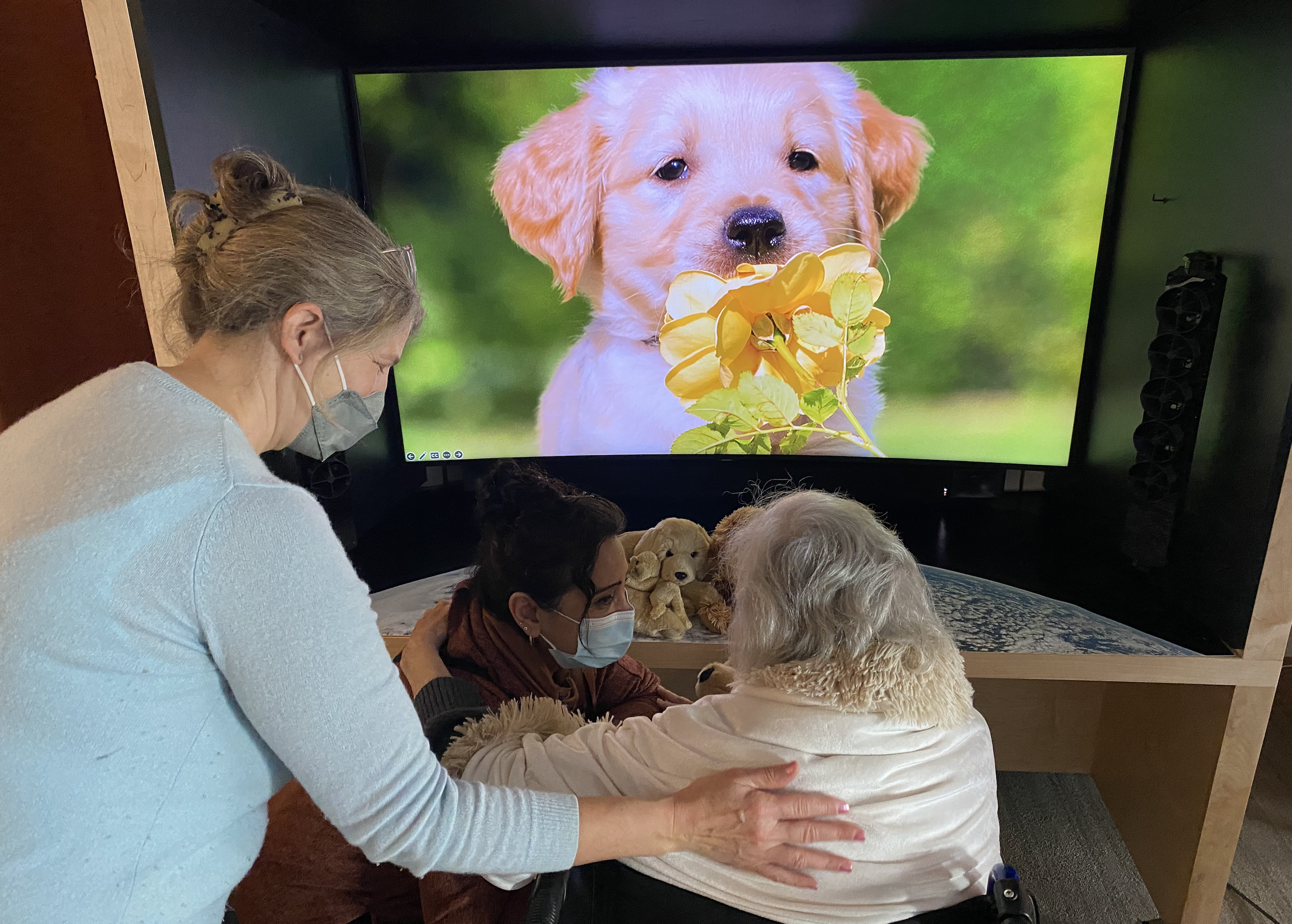The Memory Care Experience Station
The “Station” is a large-scale, multi-sensory device for people living with advanced dementia in memory care. It began in 2019 as an R+D project to prove the point that multi-sensory experiences improve outcomes. It was tested and iterated over 190 times, and is now in use at the commission site, Frank Residences in San Francisco.
FastCompany finalist in World Changing Ideas
In 2022, the project received recognition in the Experimental category. After 190+ tests and subsequent iterations, the Station became a robust tool that helps staff manages outcomes and provides families with a shared experience with their loved one.
About the Project
Multi-sensory, Personalized and Social
The Station uses immersive, multi-sensory experiences to engage cognitive functions, drawing on cutting-edge research in memory care and experience design. The Station creates personalized, interactive experiences that leverage familiar stimuli to evoke memories and emotional responses, improving cognitive and emotional well-being.
Highlights
Two-time grant awardee of the Centre for Advancement in Brain Health Institute (CABHI)
FastCompany finalist in World Changing Ideas
SCAN Foundation Honorable Mention (a category created for us)
Leading Age California Innovation Finalist
Invitation to contribute to the international Design Principles and Practices journal
Key Collaborators
Scott Minneman, PhD, served as the technical architect for the MCES. His extensive background in engineering design and emerging technology was instrumental in realizing the project's technical vision.
The Life Enrichment team at the San Francisco Campus for Jewish Living, notably, Illona Root-Chang and Daphne Valadez.
Finally, and most importantly, the residents and their loved ones at Frank Residences.
Findings
The Station was developed and tested over nearly 200 sessions with staff and residents. We created an evaluation tool with Andrea Moed, a service designer. These were the results:
Very Positive: 33%
Positive: 62%
Neutral: 3%
Negative: 2%

For haptics, we developed a "rumble" foot pad that gives the residents a sense of vibration of the road. It's been effective at triggering muscle memory and greater engagement. It's also a useful tool for redirection of anxious behavior and boredom (v.2 out of 3 shown here).

Installed at the San Francisco Campus for Jewish Living, the mobile station can be adjusted for privacy and focus. There is an adjacent cabinet with props and supplies to the right, with all of the tech hardwired in.
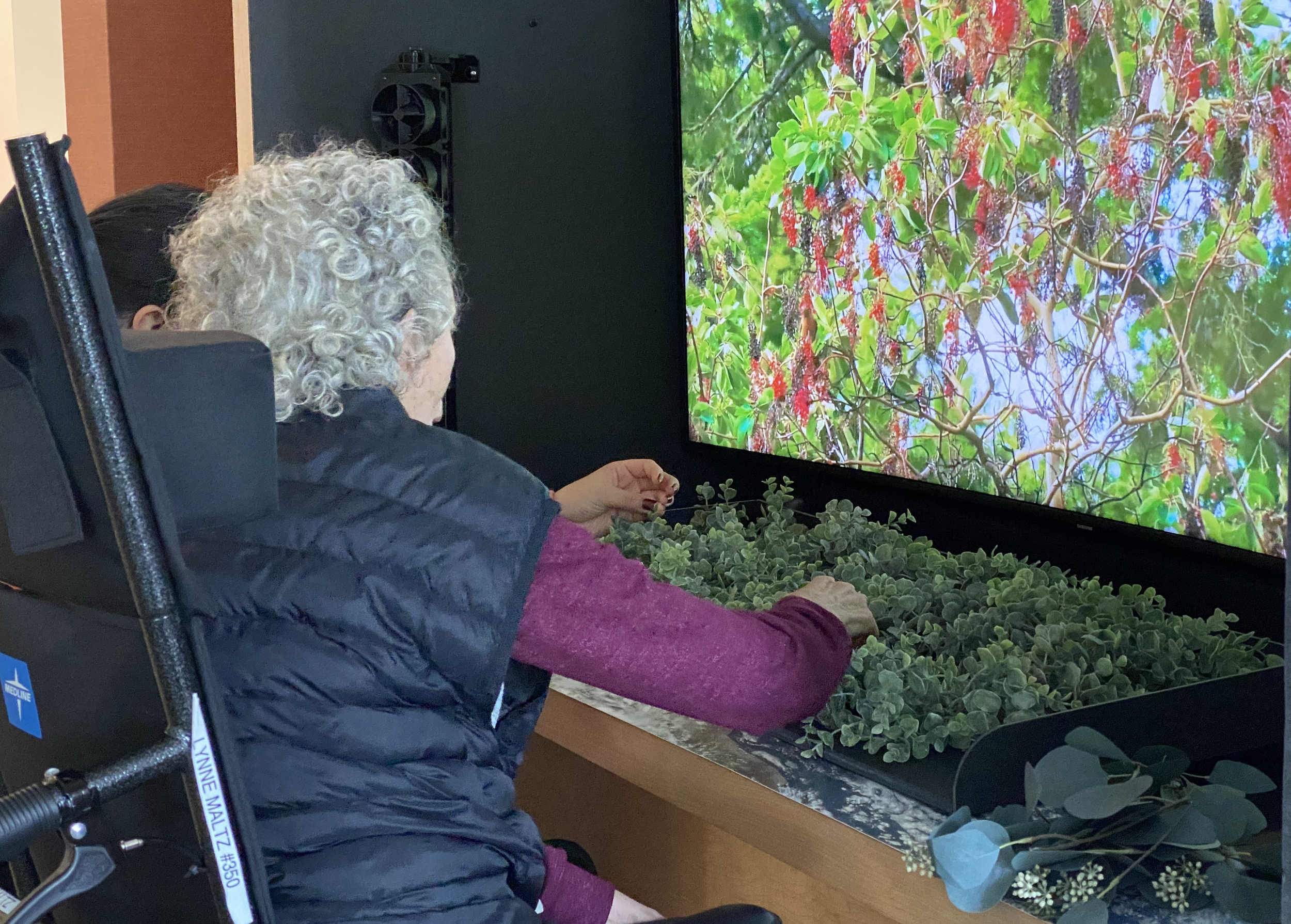
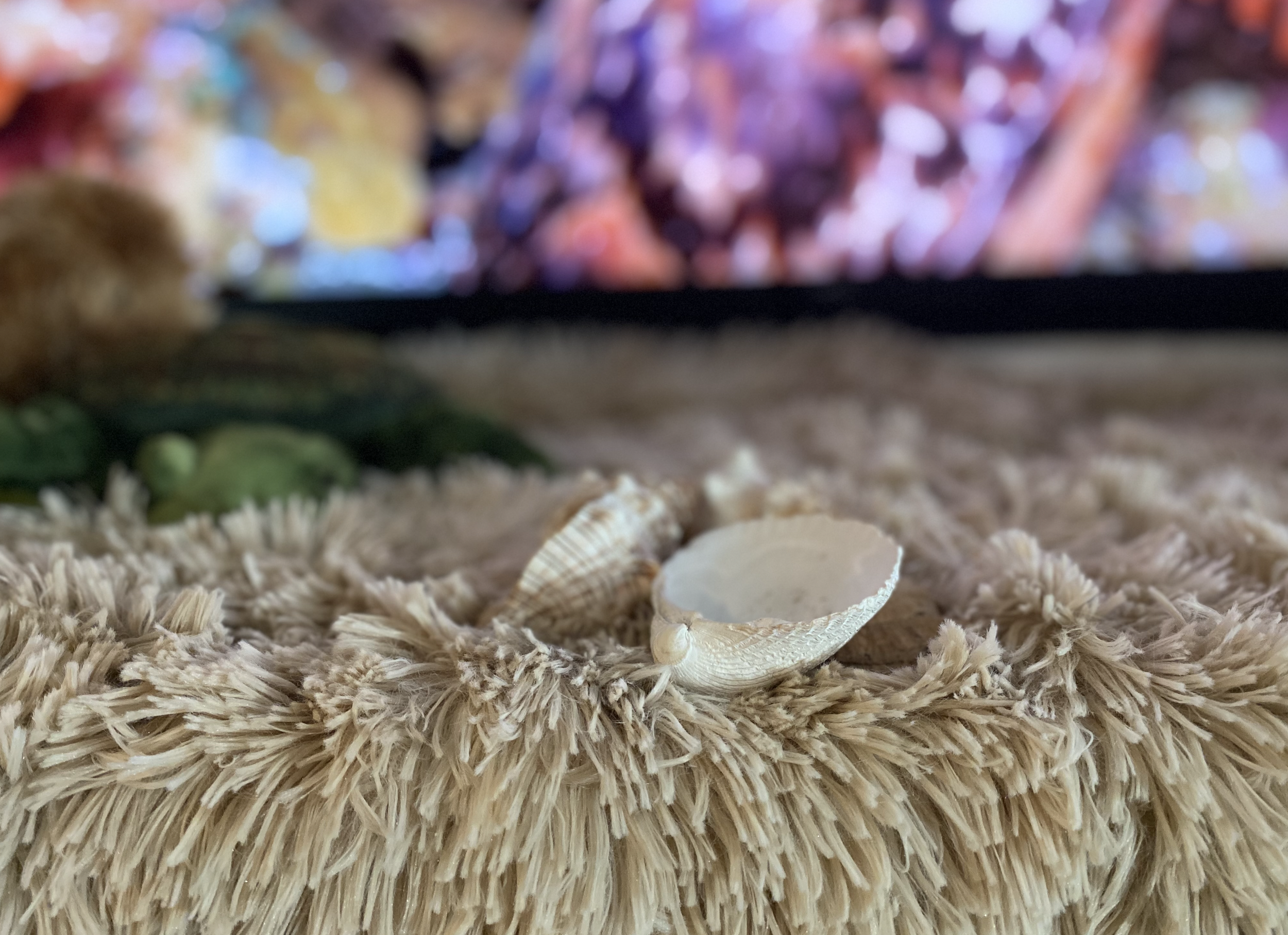
We use familiar themes and make them multisensory alongside appropriate digital media. The objective is to give staff as many "engagement" levers as possible.

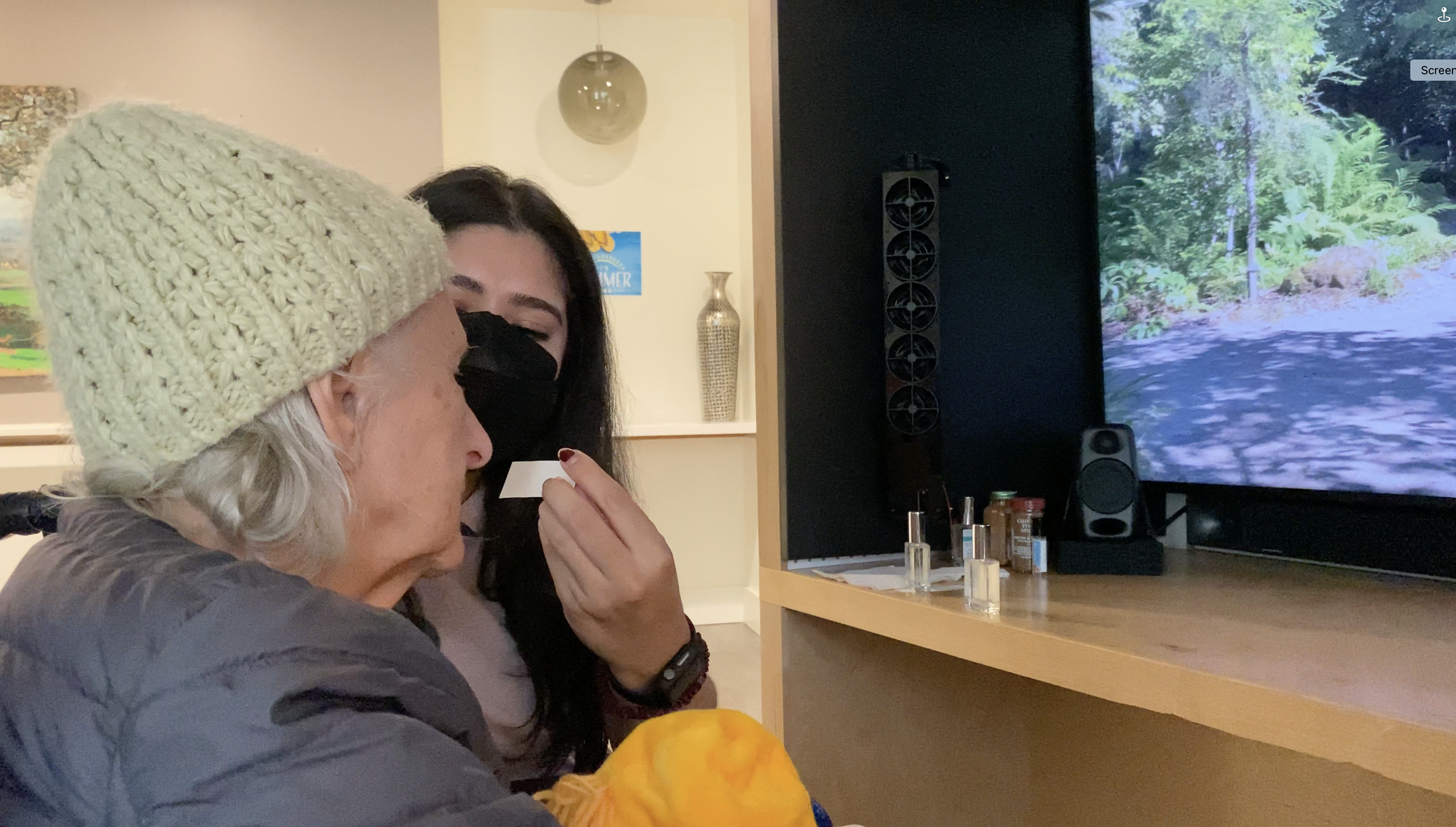
Mixing smell, props, and rich, appropriate videos has been proven extremely effective.

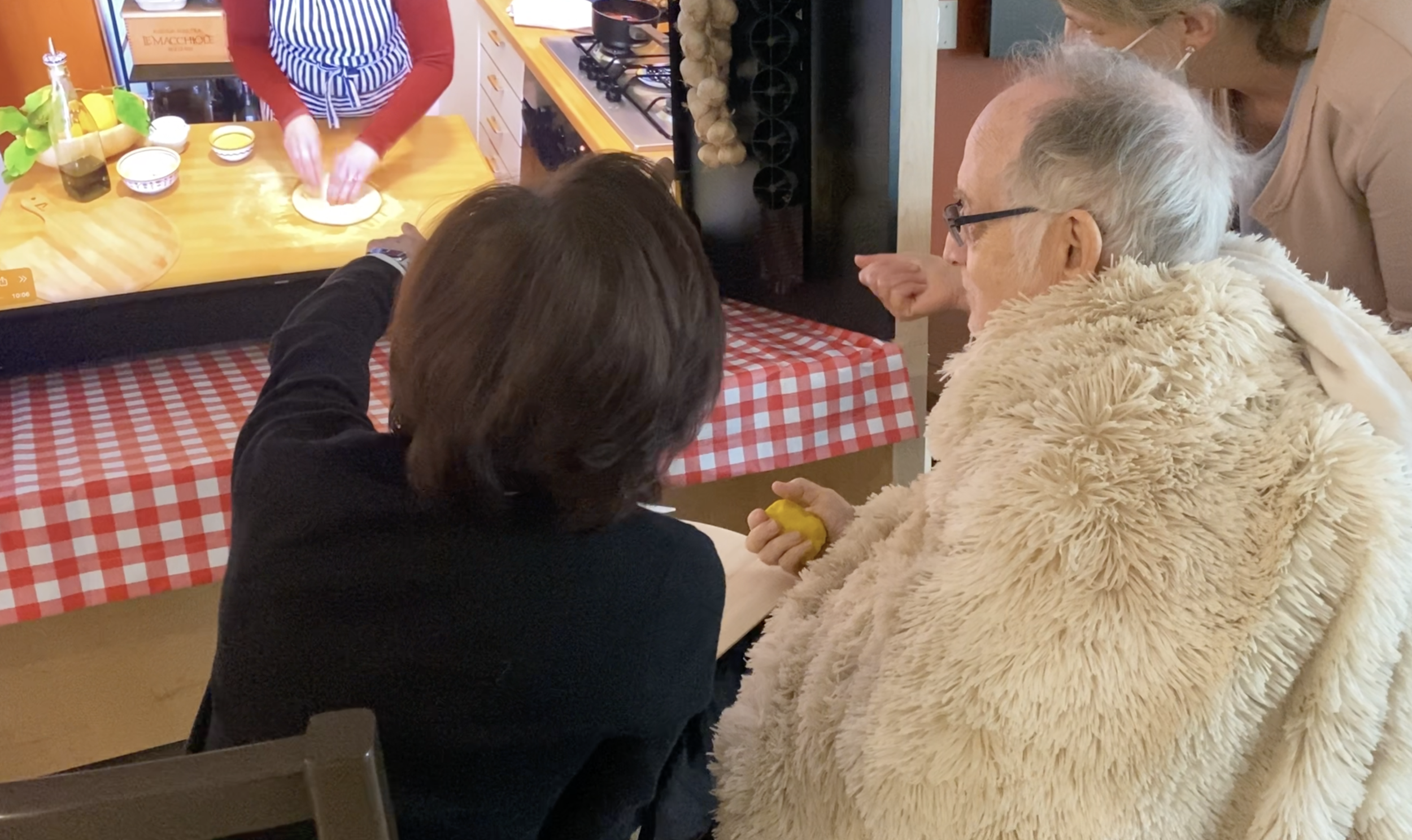
Couples come and do tactile experiences together. The idea is to model the types of engagement that's joyful that they can have now.

Grouping multiple types of prompts fosters enrichment and enjoyment. Here, there is demonstration and mirroring.
Initial Publication
The Design Principles and Practices journal invited me to contribute a paper on the project: Designing for people living with dementia: Multisensory immersion. Design Principles and Practices: An International Journal -- Annual Review
More articles and webinars to come!

